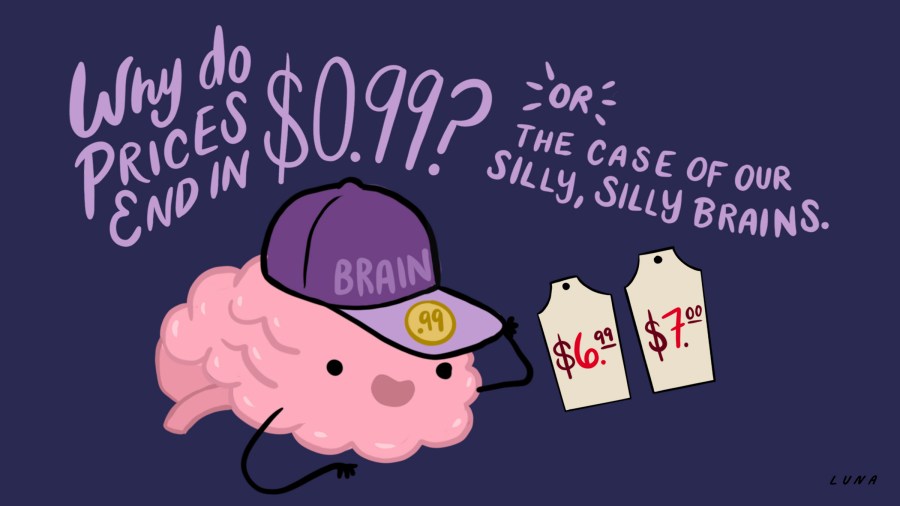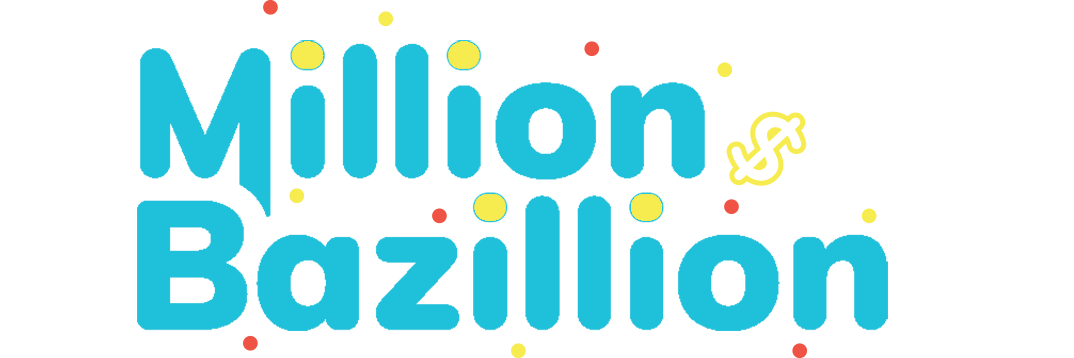Why do prices end in $0.99?

Ever notice how lots of prices at the store end in $0.99? So did Eli from Philadelphia, and he asked us to find out why. Turns out, it’s a method retailers use to get us to buy something — and it’s not their only one. This week, we’ll learn about how our brains work when we’re shopping, why it’s hard to resist a sale and some of the ways physical stores encourage us to spend a little more money. Plus, Jed’s piggy bank will tell us a story … sort of. It’s our last episode of this season, and we’re going out with a jam.

And now … tips for grown-ups listening to “Million Bazillion” with kids
Money Talks
Take a minute to recap the episode and review the key points. Here are some questions to get the kids going:
- What’s the name of Jed’s piggy bank?
- How does a $1.99 price tag trick your brain, versus a $2 price tag?
- When something is marked “on sale,” are you more likely to want to buy it? Why or why not?
- Have you ever noticed a song playing in a store? What was it and how did it make you feel?
- What’s something you saw recently in the checkout aisle that you really wanted?
(Scroll down or click here for the answers!)
Tip Jar
There’s lots of great research out there about consumer behavior. Here are a few things we found useful:
- “How Stores Trick You Into Buying & Spending More” from Money Crashers
- “How Your Grocery Store’s Layout Is Costing You Money” from Real Simple
- “The real reason most prices end in 99 cents” from CBC Radio
Gimme 5
Thanks for listening to this season of “Million Bazillion”! Have the kids got something they want to ask Jed and Bridget about, thoughts or comments about this season? Have them think it over, and send us a voice memo here.
Money Talks answers
- Piggytron.
- Since we read left to right, your brain sees the 1 first and thinks the price is closer to $1 than $2.
- Answers will vary.
- Answers will vary.
- Answers will vary.
The future of this podcast starts with you.
It’s official: kids love “Million Bazillion®!” From fun, creative lessons about trade to silly skits about the foundation of our economy, our team is committed to making kids and their families smarter about all things money.
We know you wish you had this podcast when you were a kid—and now you can make it possible for a child in your life.
The team
Thanks to our sponsors
-
![Next Gen Personal Finance]()
The Ranzetta Family Charitable Fund and Next Gen Personal Finance, supports Marketplace’s work to make younger audiences smarter about the economy. Next Gen Personal Finance is a non-profit that believes all students benefit from having a financial education before they cross the stage at high school graduation.
-
![Greenlight]()
Greenlight is a debit card and money app for kids and teens. Through the Greenlight app, parents can transfer money, automate allowance, manage chores, set flexible spend controls and invest for their kids’ futures (parents can invest on the platform too!) Kids and teens learn to earn, save, spend wisely, give and invest with parental approval. Our mission is to shine a light on the world of money for families and empower parents to raise financially-smart kids. We aim to create a world where every child grows up to be financially healthy and happy. Today, Greenlight serves 5 million+ parents and kids, helping them learn healthy financial habits, collectively save more than $350 million to-date and invest more than $20 million.
-
![Sy Syms Foundation]()
The Sy Syms Foundation: Partnering with organizations and people working for a better and more just future since 1985.





















